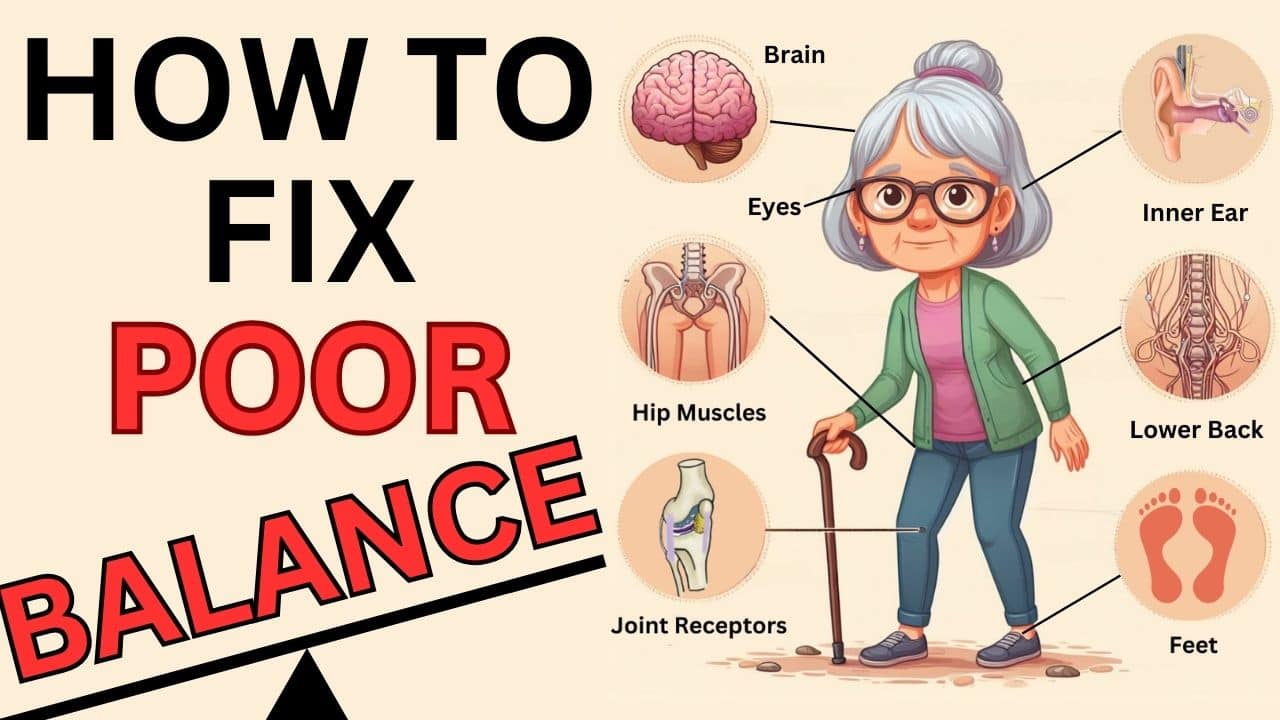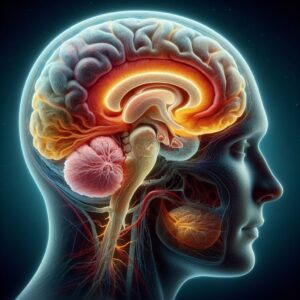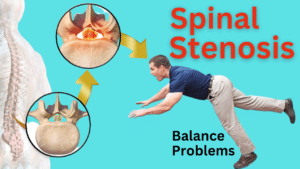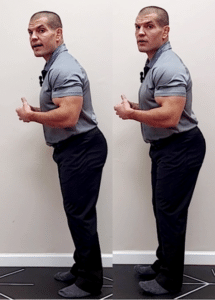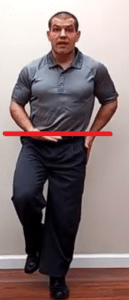Falls are a major concern among seniors. In fact, 1 in 4 seniors falls each year.
Therefore, if you have poor balance, it's really important to fix it.
However, fixing poor balance is easier said than done. Balance is a complex task, but we often take it for granted until problems arise.
Watch the video below to learn why balance is such a complex task plus how to fix poor balance with age.
Table of Contents
- What Causes Poor Balance With Age?
- The 3 Sensory Systems of Balance
- The Clinical Test of Sensory Integration and Balance (CTSIB)
- Processing Balance Information In The Brain
- Ascending and Descending Tracts in the Spinal Cord
- Output Systems Causing Poor Balance
- Conclusion
What Causes Poor Balance With Age?
In order to maintain balance, you need to maintain your center of gravity over your base of support (feet).
The ability to do this however requires many different body systems to work together.
These include:
- Sensory systems that send information to your brain
- Processing of this information within your brain
- Motor output to the muscles ensuring instantaneous reactions in order to keep your center of gravity over the feet or the base of support
The 3 Sensory Systems of Balance
The sensory systems involved in balance include:
- Your vision (eyesight)
- The vestibular system in your inner ear
- Somatosensory organs located your ligaments and the soles of the feet
These 3 systems all work together to give your brain a picture of how your body is oriented in space.
If you have poor balance, you may have a problem in one or more of these 3 systems.
But how do you know which one(s) are involved?
Fortunately, there's a test that can do just that.
The Clinical Test of Sensory Integration and Balance (CTSIB)
The Clinical Test of Sensory Integration and Balance is also know as the Foam-Dome Test.
That's because there were originally 6 conditions in the test:
- Standing on the ground, eyes open
- Standing on the ground, eyes closed
- Standing on the ground with a visual conflict dome over your head.
- Standing on foam, eyes open
- Standing on foam, eyes closed
- Standing on foam with a visual conflict dome over your head.
The test has been modified over the years to only 4 conditions by excluding the two "dome" conditions.
Modified Clinical Test of Sensory Integration and Balance
You can do the modified clinical test of sensory integration and balance at home.
If you don't have a foam pad, you can use a pillow instead. Just make sure that it's on a surface where it won't slip away from you.
Additionally, make sure that you have someone near you for safety when doing this test. This is particularly important when you have your eyes close.
You don't want to fall while doing the test.
Interpreting the Balance Test
If you have poorer balance with your eyes closed than open, it tells you that you rely heavily on your vision for balance.
If you have poorer balance standing on foam than on the floor, it tells you that you rely on sensory feedback for balance.
The eyes closed on foam condition is by far the hardest because this condition tests ONLY your vestibular system without assistance of balance of foot sensation.
How To Improve Poor Balance Based on the CTSIB
Once you've identified the specific conditions that pose challenges, the next step is to address and practice those conditions.
Make sure that you master the easier conditions first though before moving on to harder conditions. And again, make sure you have someone at home with you for safely.
Processing Balance Information In The Brain
Your brain has to process all the information coming in from your sensory systems. Then within fractions of a seconds, its has to activate the right parts of the brain to produce a proper motor response in order to maintain your balance.
The cerebellum, located at the back of the brain, plays a crucial role in balance.
However, your cerebellum doesn't work alone.
It sends signals to the primary motor cortex to activate the correct muscles needed to maintain balance.
Additionally, a part of your brain called the the substantia nigra is involved in maintaining balance. A lack of dopamine production in the substantia nigra can lead to the balance problems associated with Parkinson's Disease.
Ascending and Descending Tracts in the Spinal Cord
Moreover, issues can arise in the transmission of signals, either from the brain to the legs or vice versa.
Conditions like spinal stenosis can compress the spinal cord in the neck or lower back.
Another type of spinal stenosis called foraminal stenosis can compress the nerve roots as they exit the lower back.
In either case, spinal stenosis can cause balance problems in seniors.
Rather than going too much into detail about that now, I'd suggest just clicking on the image above to watch that video and read the blog post.
Output Systems Causing Poor Balance
The final aspect of the balance equation is the motor output.
The main muscles that control your balance are the ones in your hips, ankles, and feet.
How To Improve Poor Balance Using An Ankle Strategy
If you're standing and you get thrown slightly off balance, your feet and ankle muscles activate to pully our body back over your feet. This is kind of like an upside-down pendulum.
You can do an ankle strengthening exercise to improve your balance:
Lean forward and then backward without bending your knees.
Start with small oscillations and then progress to larger sways as your balance improves.
Do this near something sturdy that you can hold on to and/or standing in front of a couch so that if you do fall backwards, that you can grab on or sit down.
Single Leg Balance Exercise
Your hip strength is also important in maintaining your balance.
This isn't as important when you're standing on two legs, but when you stand on one leg (such as when walking) your hips really come into play.
Fortunately, standing on one leg keeping your pelvis level is a great way to fix poor balance.
If you can't do it when you first start, that's okay. Start out by holding on to something with your hand, and then as your balance improves, you can start letting go with your hand.
Conclusion
In conclusion, to improve poor balance you have to understand the multiple systems that are involved.
Then, you have to figure out which of those systems are causing your balance problems.
Finally, you need to incorporate appropriate exercises and other treatment strategies in order to improve your balance.
Fortunately though, you don't have to do it alone.
If you're in the St. Louis area and need help to fix poor balance, our specialist physical therapists at More 4 Life would be happy to help.
We'll help you figure out what factors are contributing to your balance problems and how to fix them. Just tap the button below to request an appointment.
Here are some other posts about how to improve poor balance with age that you may enjoy:
Spinal Stenosis And Walking Problems
3 Best Balance Exercises For Seniors To Improve Balance At Home
3 Strengthening Exercises For Ankle Stability and Balance

